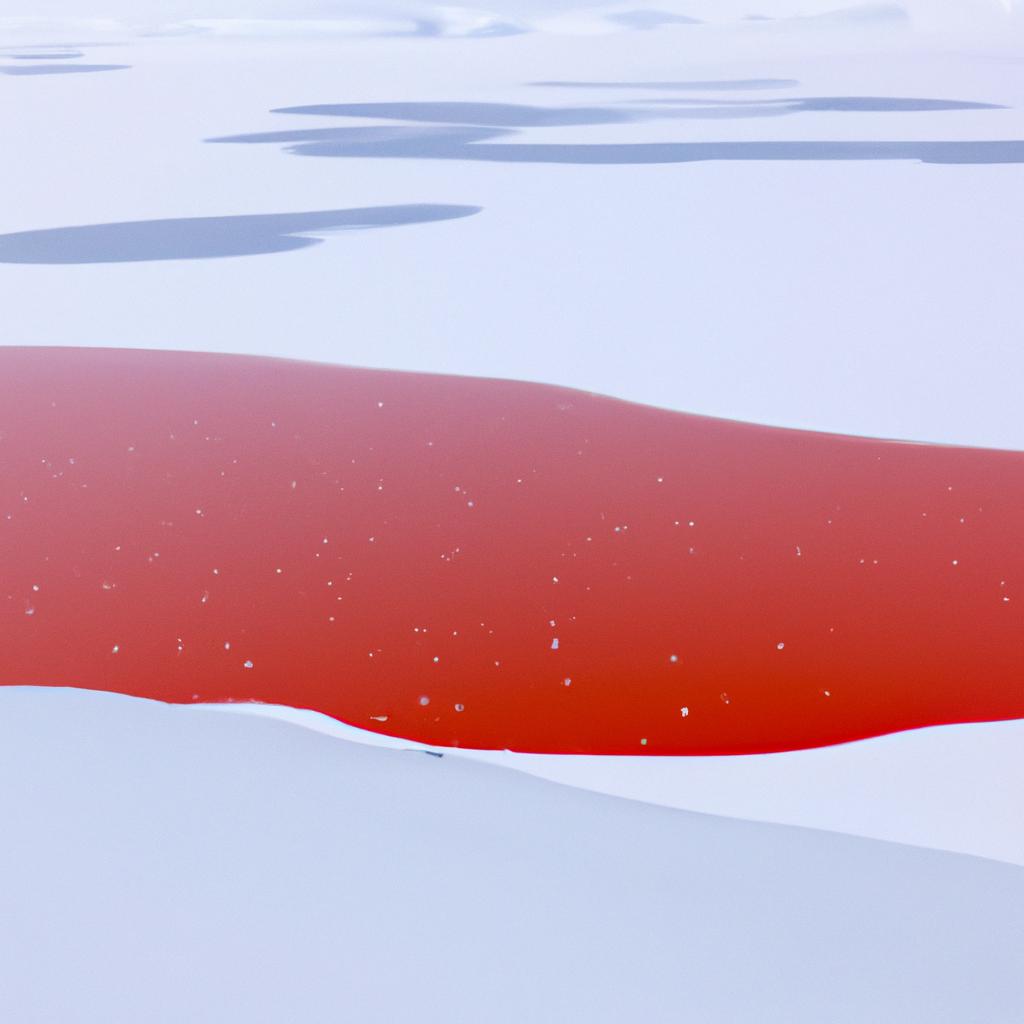Have you ever heard of Blood Lake in Antarctica? Prepare to be captivated by this mysterious body of water that has intrigued scientists and adventurers for years. Blood Lake, also known as Lake Bonney, is a small, shallow lake located in the McMurdo Dry Valleys region of Antarctica. In this article, we will embark on a fascinating expedition, exploring the depths of Blood Lake Antarctica, unveiling its unique characteristics, and unraveling its significance.
What is Blood Lake Antarctica?
Blood Lake, measuring approximately 1.5 miles long and 0.5 miles wide, with a maximum depth of 50 feet, has earned a remarkable reputation due to its distinctive features. One of the most notable aspects of this lake is its salinity. It is three times saltier than seawater, allowing it to remain unfrozen despite the extreme cold of Antarctica.
The Fascinating Origins of Blood Lake
But how did Blood Lake acquire its intriguing name? The answer lies in the lake’s mesmerizing color. The water of Blood Lake carries a reddish tint, resembling the color of blood. This striking hue is caused by the high levels of iron oxide, or rust, present in the water. The iron oxide originates from the weathering of the surrounding rocks, shaped by the harsh Antarctic environment.
The Enigmatic World within Blood Lake
Blood Lake’s significance lies not only in its peculiar appearance but also in its thriving ecosystem. This unique lake serves as a habitat for extremophiles, microorganisms that flourish in extreme environments. Scientists have uncovered a diverse range of microorganisms in Blood Lake, some of which are found nowhere else on Earth. Exploring Blood Lake offers invaluable insights into the history of Antarctica and its transformation over time.
Unveiling the Science Behind Blood Lake
Blood Lake may seem like a small and shallow body of water, but it is actually a complex ecosystem. Fed by glacial meltwater and encompassed by permanently frozen ground, this lake harbors intriguing geological and biological processes. These processes contribute to the lake’s distinctive qualities, including its red color owing to the interaction between the water and iron-rich rocks.
Thriving in Extreme Conditions
Despite the extreme conditions, Blood Lake hosts a diverse and thriving microbial community. Bacteria, algae, and other microorganisms have adapted to survive in this harsh environment. These microorganisms intrigue scientists as they offer insights into life in extreme environments and provide clues concerning the origins of life on Earth.
Blood Lake’s Environmental Impact
As a unique body of water, Blood Lake has the potential to impact its surrounding ecosystem. Scientists are diligently studying the lake to understand any possible environmental risks it may pose. One concern is the introduction of non-native species, which could disrupt the delicate balance of the microbial ecosystem. Additionally, Blood Lake plays a role in the carbon cycle, releasing gases into the atmosphere during the freezing and thawing process, potentially affecting our climate.
Climate Change and Blood Lake
The impact of climate change on Blood Lake and its ecosystem is a growing concern. As temperatures rise, changes in water levels, temperature, and salinity may occur, affecting the microbial life within the lake. Moreover, these changes may also disrupt the delicate balance of the unique ecosystem in the surrounding area, known as the McMurdo Dry Valleys region.
The Importance of Monitoring Blood Lake
To fully comprehend the potential environmental impacts of Blood Lake, continuous monitoring is crucial. Scientists are conducting regular studies to track changes in the lake’s ecosystem and analyze their ramifications on the environment. Monitoring Blood Lake is vital for obtaining a broader understanding of the effects of climate change on Antarctica and our planet as a whole.
Unveiling the Mysteries of Blood Lake
In conclusion, Blood Lake Antarctica is an extraordinary body of water that has captivated the minds of scientists and adventurers alike. This expedition into the depths of Blood Lake has revealed its unique microbial life and the fascinating geological processes that shape this enigmatic body of water. We have examined the potential environmental impact of Blood Lake, recognizing the importance of ongoing research and exploration.
Research expeditions to Blood Lake have faced numerous challenges and risks, from harsh weather conditions to the threat of contamination. Nevertheless, these expeditions have provided invaluable insights into the world of Blood Lake and its intricate ecosystem. As we conclude this remarkable journey, let us celebrate the significance of Blood Lake Antarctica. Continued research and exploration are essential to fully comprehend this unique ecosystem and its role in the broader context of climate change and our planet’s health.
Thank you for joining us on this enthralling expedition. We hope you have gained a deeper appreciation for the significance of Blood Lake Antarctica. Stay tuned for more exciting discoveries and explorations on TooLacks.



